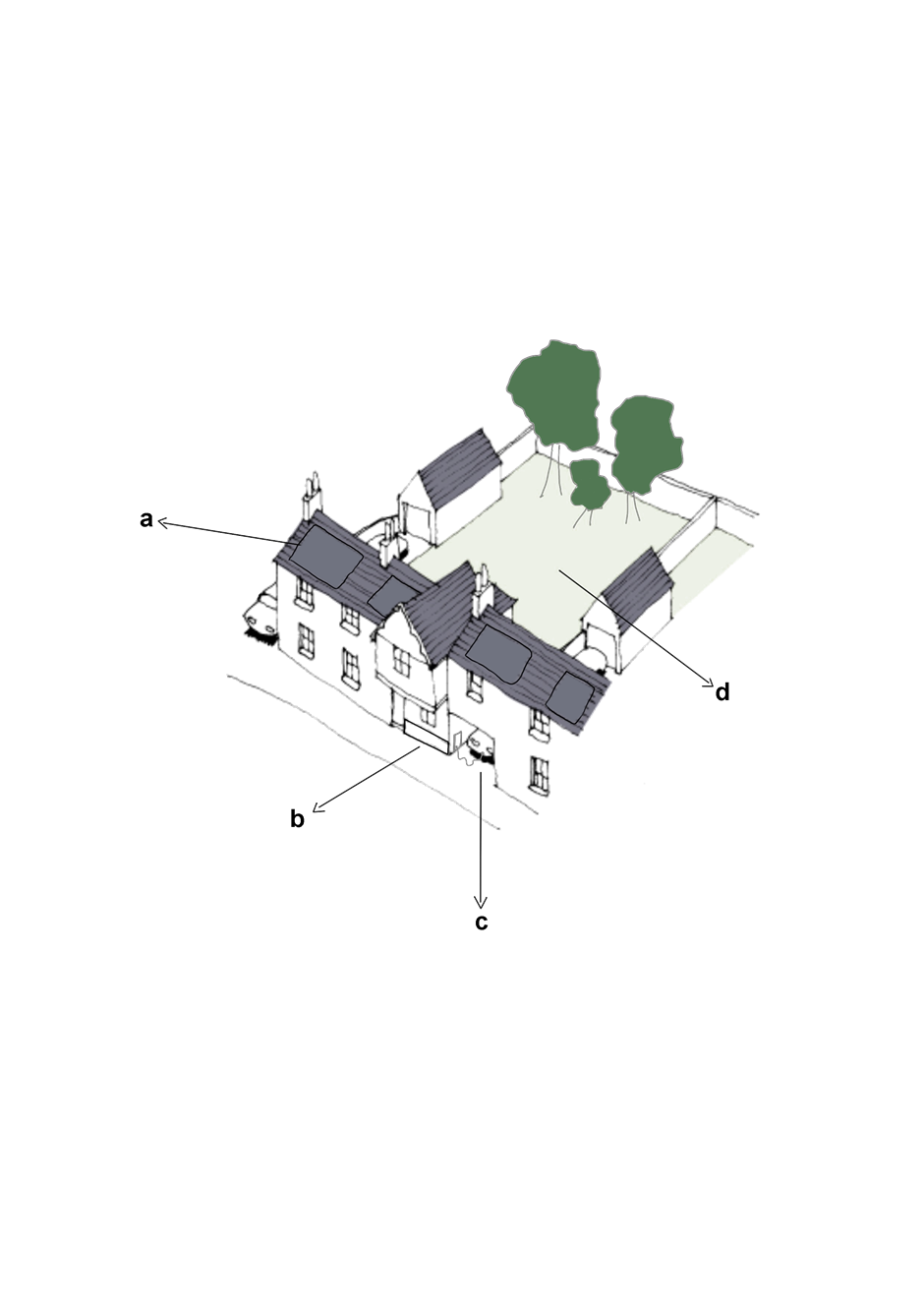Renewable Energy for Developments
With technological advances come opportunities to integrate renewable energy systems into developments, increasing the sustainability of homes, reducing the pressure on fossil-fuel provisions and cutting running costs.
Energy Hierarchy is a classification of energy options, prioritised to assist progress towards a more sustainable energy system. Design codes, as stated in the Model National Design Code can include a local energy hierarchy based on energy efficiency standards, renewable energy sources and renewable energy networks, following a ‘fabric first’ approach.
Energy targets
We recommend that all developments operational targets for new homes are consistent with the LETI Climate Emergency Design Guide . Energy use targets are more transparent and robust than
carbon reductions targets and are the best way to ensure zero carbon is delivered in practice.
An ultra low energy home is one which has a very low space heating demand. This requires a fabric efficiency and airtightness equivalent to that of a new Passivhaus home.
- Heat pumps are considered the most efficient low carbon heat source keeping energy use to a minimum, while not using fossil fuels on site. Gas or oil boilers must not be used anymore.
- Net Zero carbon in operation can only be achieved by increasing renewable electricity generation. Solar PVs represent a mature and easy to use technology.
Efficient heating of buildings
The electrification of heat (e.g. the replacement of gas boilers by heat pumps) is widely considered as one of the main priorities of decarbonisation. New gas or oil boilers should not be installed in buildings anymore, in new or existing homes.
Energy storage (e.g. hot water tank) and management (e.g. smart controls) as well as smart meters for Time of Use (ToU) variable electricity tariffs are all likely to become increasingly important. In summary, electrification and digitalisation provide the backbone of decarbonisation for buildings.
Solar PV panels are a simple, mature and reliable renewable energy technology. The majority of new homes have sufficient space on site to generate as much energy as they need on an annual basis. They are a particularly good match for heat pumps, where much of the solar electricity can be used to provide heating and hot water.
Conflict management
As with all environmental and sustainable development factors within new development, conflicts between interventions will need to be carefully reviewed and managed.
Daylight and acoustics design can conflict with overheating assessments. Use the Acoustics and Noise Consultants (ANC) Acoustics, Ventilation and Overheating Guide to determine an approach to acoustic assessment and seek to maximise daylight without significantly adding to the overheating risk.
Carry out overheating modelling Dynamic modelling should be undertaken to identify more clearly the risk of overheating and how to mitigate it. Prior to any planning submission, checking compliance with CIBSE guidance TM59 is recommended. A statement should be produced as part of the assessment to demonstrate the strategies can be implemented.
Page updated: 11/05/2022
